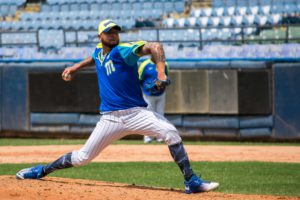Thinking of Surgery for SLAP lesion? Read This Before You Decide

Reference
Steinmetz, R., Guth, J., Matava, M., Brophy, R., & Smith, M. (2022). Return to Play Following Non-Surgical Management of Superior Labrum Anterior-Posterior Tears: A Systematic Review. Journal Of Shoulder And Elbow Surgery. https://doi.org/10.1016/j.jse.2021.12.022
Objective
Most of the literature on SLAP (Superior Labrum from Anterior to Posterior) lesion focused on outcomes following surgical intervention, and studies show that the return-to-play rate ranged from 70 to 79.5%. Although conservative shoulder rehab is usually the first line of treatment for SLAP tear, there is little research focusing on its prognosis following non-surgical management. Thus, this study aims to find out the efficacy of conservative management in athletes with SLAP tears, with emphasis on rate of return to prior level of play.
What They Did
Study design: Systematic review
Search strategy: PRISMA method
Inclusion criteria:
- involved non-surgical treatment of SLAP tear
- included competitive and recreational athletes as participants
Exclusion criteria:
- involved only surgical treatment of SLAP tear
- involved evaluation of other shoulder conditions (e.g. rotator cuff tears, shoulder instability or Bankart repairs)
- case reports, anatomic or biomechanical studies
What They Found
Five articles were included, with a total of 244 total athletes, 162 of which are elite or higher-level athletes. Average age ranged from 20.3-38.0 years old.
Most common sports for SLAP lesion includes baseball, softball and weightlifting. Follow-up time ranged from 12.6-36 months.
Effect of conservative management on subjective outcome measures:
- significant improvement in ASES (American Shoulder and Elbow Surgeons) score from 54.1-58.5 to 84.7-86.4.
- significant improvement in VAS (Visual Analog Scale) from 4.5-6.2 to 1.7-2.2.
- significant improvement in Simple Shoulder Test and EUROQoL (European Quality of Life) score.
Overall rate of return to play:
- general athletes: 53.7%
- elite or higher-level athletes: 52.6%
Rate of return to play in athletes who completed rehab:
- general athletes: 78%
- elite or higher-level athletes: 76.6%
Rate of return to prior performance in athletes who:
- did not complete rehab: 42.6%
- complete rehab: 72%
Average number of physiotherapy sessions needed in patients who:
- elected surgery: 8 sessions
- elected conservative treatment: 20 sessions
Average duration before return to play after conservative management:
- 5.2 to 5.7 months
General treatment protocol:
- Initial stage: reduce inflammation + address GH internal rotation deficit (GIRD) and scapular dyskinesis
- Progression: Strengthen and improve endurance of periscapular and rotator cuff muscles, improve neuromuscular control
- Return to sport: allowed if asymptomatic, demonstrated full and painless ROM, and completed all sport-specific goal
- Adjuncts: NSAIDS, GH and subacromial steroid injections administered as needed
Factors associated with failure of conservative management:
- older age
- participation in overhead sports
- traumatic cause
- positive compression rotation test
- participation in high-level sports with overhead throwing
- longer sport career
- existing rotator cuff injury
- longer symptomatic period
- presence of Bennet spur (calcification of posterior band of inferior GH ligament)
Conclusion
Conservative management can be effective in returning athletes with SLAP lesion back to play, although there are certain factors that reduce the odds of success. Patients who chose surgical intervention require much fewer follow-up physiotherapy sessions compared to those who elected conservative treatment.
Practical Takeaways
Given that more follow-up physiotherapy sessions are required with conservative management, In-season athletes who may not have the luxury of time may be more inclined towards surgical intervention. For off-season or recreational athletes, conservative treatment may be a better option since it produces similar rates of return to play when compared to surgical intervention, provided that the athlete adheres fully to the rehab programme. However, it is also important to inform patients of the factors associated with poorer outcome, so that patients can have realistic expectations on the likelihood of return to play with non-surgical management.
